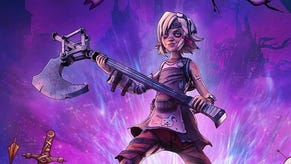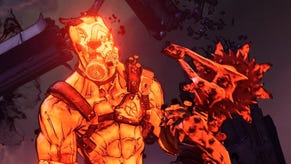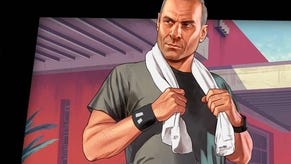Face-Off: Borderlands 2 on PlayStation Vita
A home console experience in the palm of your hand?
Creating a faithful portable version of Borderlands 2 was always going to be a challenge. Originally released in 2013 for PC, PS3 and Xbox 360, Gearbox's shooter uses a modified Unreal Engine 3 to produce frenetic, cartoon-style action with an online twist, running at 25-30fps on both home consoles. Today we finally have the PlayStation Vita edition in our hands, which comes bundled with all the downloadable content released so far, plus a cross-save feature to complement the PS3 release. Cutbacks of some form are inevitable but through it all, does the core experience remain intact?
Alas, and perhaps for good reason, there's a scarcity to Unreal Engine 3 titles on Vita so far, with Mortal Kombat Vita being the most ambitious attempt yet, and very little in terms of final software coming close to Epic's jaw-dropping NGP demo in 2011. In Mortal Kombat's case, the game strips down its visuals as far as possible to preserve 60fps gameplay, producing an entertaining port even with its plain character models, effects and textures. However, in Borderlands 2 Vita's case, even the core feature-set has necessarily been whittled down, with developer Iron Galaxy Studios needing to drop the online co-op player count from four to two.
It's an unfortunate move for an open-world action RPG, with some of its sparser areas clearly built to suit a higher player count - though this isn't a killing blow for the overall experience. Borderlands 2 is presented at the Vita's full native resolution of 960x544, marking it as one of the few big-budget titles to pull this feat off. This spares us some nasty upscaling issues with its stylish black comic-book style borders, and means it look very crisp. There is no anti-aliasing to speak of, but the Vita's smaller screen does help minimise the distraction of jagged edges.
With the Vita release updated to version 1.1 - the latest at the time of writing - we go into comparisons with its PS3 and 360 siblings expecting the worst on the visual front. Indeed, as shown by our head-to-head comparison video below, it's clear that a downgrade is in place for just about every facet of Borderlands 2's visual design - a state of affairs you can look at more closely in our Borderlands 2 PS Vita/PS3/Xbox 360 comparison gallery. Most striking is the removal of all shadows, which in concert with the dropped texture resolution leaves the world looking very plain by contrast.
"Some serious cut-backs are in place - in both visuals and performance - to make Borderlands 2 a portable reality."
That said, there are few competing Vita titles that match Borderlands 2's broad scale of level design. Geometry is still rendered from far across the map, even while standing at high lookout points, and LOD pop-in is kept to a surprising minimum as you approach each area. This is undoubtedly the most ambitious part of the port, and one that earns it great kudos. As a bonus, much of the geometry itself - the icy ridges of the early sections, as well as houses - only receives minor tweaks from the PS3 and 360 editions when viewed up close. It's a largely inconsequential downgrade during play, and we're also glad to see the difficulty is maintained, with enemies spawning at a usual rate for each mission area.
However, we can't ignore some sharp excisions to world detail as well. Hub areas like the bustling Sanctuary keep the NPC count as-was, but are stripped of reflective elements such as puddles and windows, and most ground detail is lost. Grass tufts and rocks are removed in more rural areas too, and in cut-scenes we see that alpha effects are also given the axe - with no bursts of lightning or fire appearing where it should. Transparencies are a core weakness of the Vita's GPU, so this is perhaps not surprising. The net result is still impressive given the Vita's portability factor, but there is a sense of vacancy to each area.
Frustratingly, this isn't the last of Borderlands 2 Vita's troubles. The text and menu UI are absolutely tiny, with the map and objective list also needing a good squint to read. Subtitle font size is updated to suit the screen size, thankfully, but the rest is a surprising oversight, particularly given how much time is spent customising weapon loadouts.
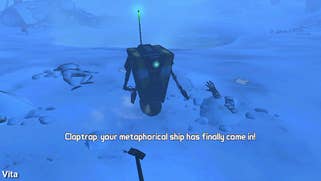

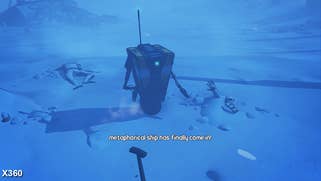
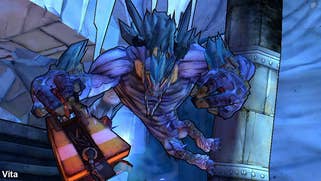

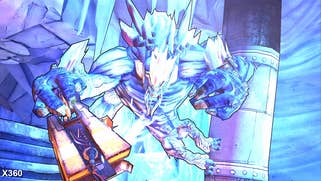
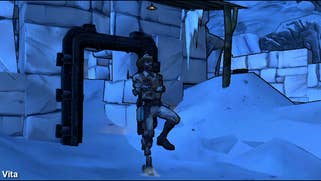
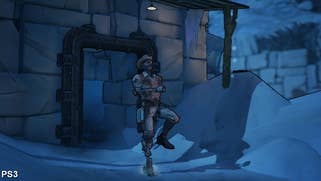
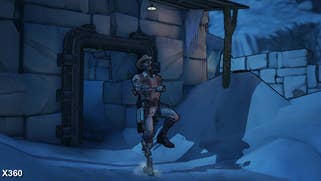

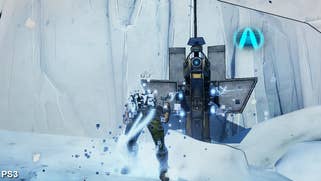
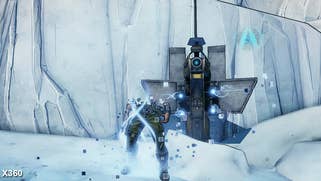
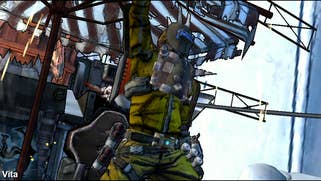




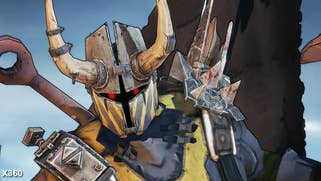
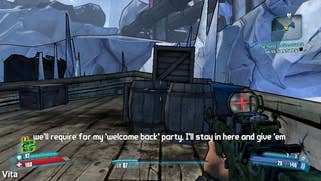


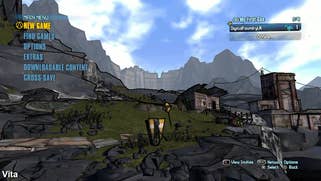
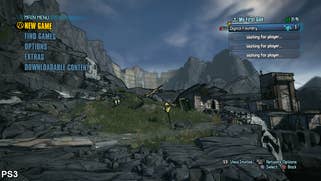
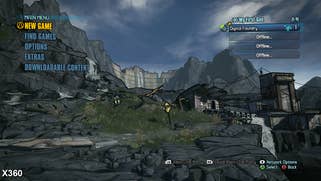
With so much tugged and twisted to suit the Vita's humble technical limits, we're hoping for performance that draws closer to the 30fps target on home consoles. Unfortunately, this is far from the case.
To start, an adaptive v-sync setup is in place as with PS3 and 360, allowing the Vita to tear frames whenever it drops from 30fps. Unfortunately this happens more often than any other version, with 20fps often being the average during battle with a regular Bullymong pack - and descending far lower for a boss encounter with Captain Flynt. In a scenario involving columns of fire rising from the floor, we hit 15fps as a baseline for the duration of the fight, with hiccups causing further drops to a record low of 8fps.
Borderlands 2 Vita's tendency to stutter is the greater of two evils here. While a lock at even a constant 20fps would have been barely passable, level streaming and bursts of alpha effects in battle cause regular hiccups - making the camera suddenly jolt in directions never intended. It's borderline uncontrollable at times, and in conjunction with the tearing, makes a complex area like Sanctuary a real sight to behold. Improvements are promised in this area via a future patch, but just how much more can be trimmed from Borderlands 2's core functionality or visuals remains to be seen.
"Borderlands 2 on Vita struggles to rise above 20fps performance during combat, where a smooth frame-rate matters most."
Alternative analysis:
In our experience, there isn't much that can be done to help performance. Testing the Vita's Airplane mode, designed to switch off background processes such as WiFi scanning, yields no gains over a standard play-through in like-for-like scenes. As first revealed in a Digital Foundry piece on the Vita version of Oddworld: Stranger's Wrath, there is a power mode that reduces GPU clock-speeds in order to power the WiFi module required for online play. The theory suggests that forcing off WiFi may see power returned to the GPU, resulting in a higher frame-rate. However, nothing we have seen based on Borderlands 2 testing suggests that this is actually the case.
That said, turning on the in-game Censor Gore option does reduce hiccups during battle - at the expense of having enemies jarringly disappear the moment they're offed. This only scratches the surfaces of Borderland 2's problems though, with other alpha effects and level streaming still bringing their own dips, and a baseline frame-rate that's unpleasant either way.
"Can engaging Airplane mode divert power away from WiFi back to the GPU? Our Borderlands 2 tests suggest not."

Borderlands 2 on Vita - the Digital Foundry verdict
It's clear some developers are out for a challenge, and Iron Galaxy Studios has seemingly gone for the mission impossible with Borderlands 2 on Vita. The bedrock of any shooter should be an even and dependable frame-rate, but this port sacrifices so much in the visual stakes and earns too little back in terms of performance. Downgrades in everything from shadows, effects, textures and even its co-op player count are unfortunate, but stand for nothing when a game still runs in the 10-20fps range - with stuttering dragging it down further.
All of which is a shame, because from the outset there was promise in this release. The world's scale and enemy count are upheld from the PS3 and 360 versions, and the presentation is a clean match for the Vita screen's native resolution. Perhaps we could see a resolution downscale to increase performance, but it's difficult to guess just how much of a frame-rate uplift we'd see. Certainly, after discussion with developers on the matter, CPU bottleneck is just as much of an issue for frame-rates - if not more so - than the GPU on Vita, and that's something that wouldn't be so easy to address.
In its current form then, this Vita edition is difficult to recommend. Despite being one of the most technically ambitious ports for the system, it remains just that - a port, and one which does not seem to be the best possible hit for the Vita architecture.








